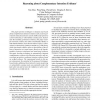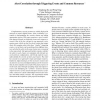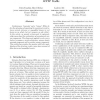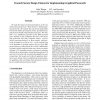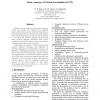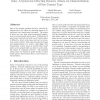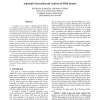ACSAC
2004
IEEE
14 years 6 months ago
2004
IEEE
Host security is achieved by securing both the operating system kernel and the privileged applications that run on top of it. Application-level bugs are more frequent than kernel-...
ACSAC
2004
IEEE
14 years 6 months ago
2004
IEEE
This paper presents techniques to integrate and reason about complementary intrusion evidence such as alerts generated by intrusion detection systems (IDSs) and reports by system ...
ACSAC
2004
IEEE
14 years 6 months ago
2004
IEEE
Complementary security systems are widely deployed in networks to protect digital assets. Alert correlation is essential to understanding the security threats and taking appropria...
ACSAC
2004
IEEE
14 years 6 months ago
2004
IEEE
Mobile ad hoc network routing protocols are highly susceptible to subversion. Previous research in securing these protocols has typically used techniques based on encryption and r...
ACSAC
2004
IEEE
14 years 6 months ago
2004
IEEE
Combining an "anomaly" and a "misuse" IDSes offers the advantage of separating the monitored events between normal, intrusive or unqualified classes (ie not kn...
ACSAC
2004
IEEE
14 years 6 months ago
2004
IEEE
We study the impact of selected parameters on the size of the password space for "Draw-A-Secret" (DAS) graphical passwords. We examine the role of and relationships betw...
ACSAC
2004
IEEE
14 years 6 months ago
2004
IEEE
Software security assurance and malware (trojans, worms, and viruses, etc.) detection are important topics of information security. Software obfuscation, a general technique that ...
ACSAC
2004
IEEE
14 years 6 months ago
2004
IEEE
1 A number of recent applications have been built on distributed hash tables (DHTs) based overlay networks. Almost all DHT-based schemes employ a tight deterministic data placement...
ACSAC
2004
IEEE
14 years 6 months ago
2004
IEEE
One of the growing problems faced by network administrators is the abuse of computing resources by authorized and unauthorized personnel. The nature of abuse may vary from using u...
ACSAC
2004
IEEE
14 years 6 months ago
2004
IEEE
A common way to elude a signature-based NIDS is to transform an attack instance that the NIDS recognizes into another instance that it misses. For example, to avoid matching the a...

